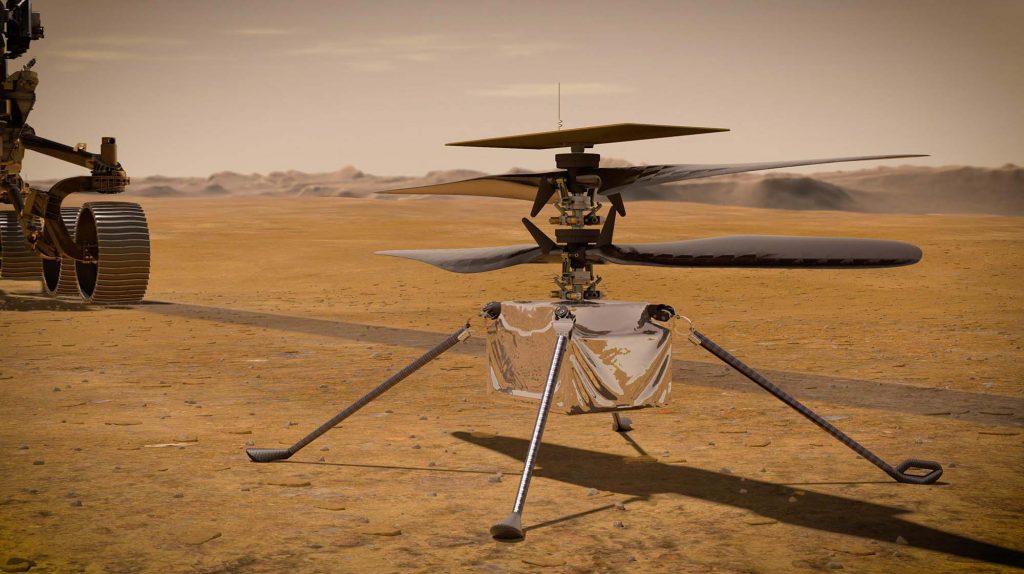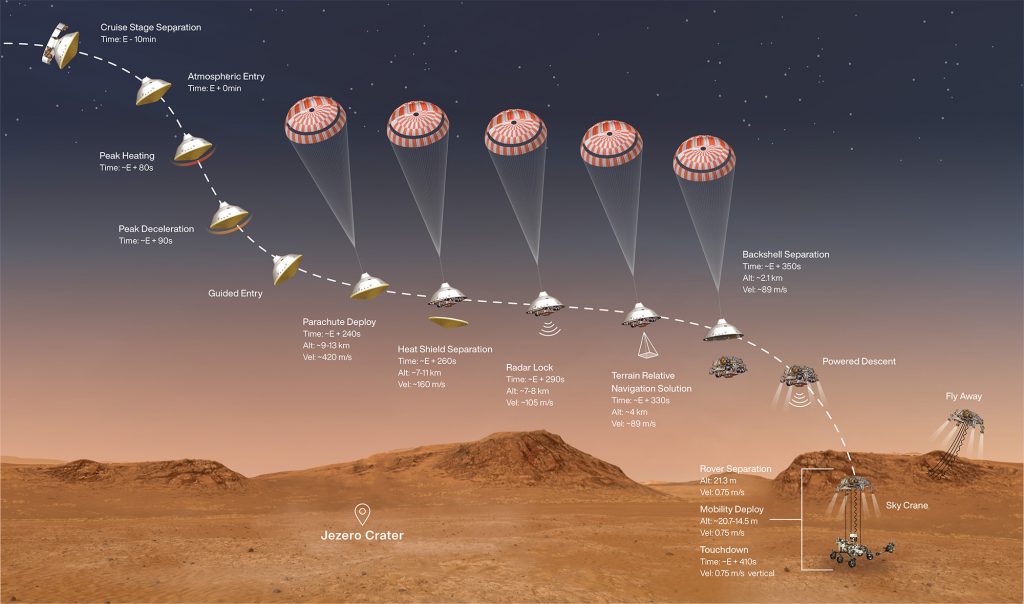About 3.5 billion years ago, water flowed on the surface of Mars. Did that water host life?
NASA's Perseverance Rover hopes to answer this question by searching for ancient life in Jezero Crater. The crater is home to a dried-up river delta, where sediment built up as water poured in over eons.
The rover has been roaming Jezero since landing at the Octavia E. Butler Landing Site in February 2021.
Perseverance is packed with instruments to help it in its search, including spectometers, cameras, and drilling equipment.
It is the first step in a multi-mission project called Mars Sample Return, which will core rock samples from the ground and send them back to Earth for analysis.
NASA is also trialling new technologies with the mission, like the Ingenuity helicopter and MOXIE, which turns carbon dioxide in the Martian atmosphere into oxygen.
Read along with the transcript below.
Introduction
This expanse of red dust and boulders hides a secret.
A flooded history washed with ancient water.
We are in Jezero Crater on Mars … and we're looking for ancient life with Perseverance.
This big, roaming laboratory has been wandering the Martian desert since February 2021.
It's done some cool science… but its biggest goal is just getting started.
Landing Perseverance on Mars
We're at the Octavia E. Butler landing site, where Percy fell from the sky during seven minutes of terror.
It dropped via a supersonic parachute and then a sky crane … where the fate of the mission literally hung by a thread.
It's since been hard at work, learning as much as it can about the region's history.
But … why here?
Well, three and a half billion years ago, Jezero Crater was more like Jezero Lake.
Rushing water came in from this river, flooding the region over and over.
As the water poured in through this delta, sediment built up to form an enormous fan.
That sediment is crucial, because on Earth, it preserves ancient lifeforms … and … if life ever existed on Mars … it's probably hiding right here.
Mars Sample Return
So, we're on the hunt for life.
How do we do that?
Percy is packed with instruments to search for organic molecules and interesting chemistry, with an X-ray spectrometer and UV laser set with the task.
But as with any space mission, there's a problem… you can't pack all of the Earth's labs and its best equipment onto a rocket.
So Percy has a different mission … find intriguing samples of rock, core them out of the ground, and store them in airtight titanium tubes in its belly.
Then, a future mission will arrive, collect the samples, and shoot them back to Earth for analysis … sealed and sterilized under strict quarantine.
It would be the first time we've ever returned samples from another planet.
When we did the same thing with moon samples during the Apollo era, we unlocked decades' worth of science.
Percy is set to do the same for the Red Planet.

Ingenuity, the Mars Helicopter
And so, off Percy goes to collect tiny tubes of Mars … packed with secrets.
But that's not all that Perseverance is packing.
Another robot hitched a ride on Percy … the Ingenuity helicopter.
This autonomous drone conducted the first ever powered flight on another world … and now, it's done it dozens of times.
With barely any atmosphere to fly in, Ingenuity is built light … with massive, long blades to push it into the air.
Since proving flight is possible on Mars, Ingenuity has acted as Percy's aerial scout, providing a clear view of the road ahead…
…and even spotting the rover's old landing gear.
Helicopters like Ingenuity will be a crucial tool for future astronauts … as they navigate the cold, dry expanse.
Creating oxygen with MOXIE
There's more science on show with MOXIE… or the Mars Oxygen In-Situ Resource Utilization Experiment (whew).
That long name belongs to a trailblazer … the first device ever to produce oxygen on another planet.
It takes carbon dioxide from the Martian atmosphere and splits off some oxygen, making, in theory, breathable air.
It's only been used once so far and only produced a little oxygen, enough for about 10 minutes of air.
But breathable air is not the only goal … the oxygen can also be used to make rocket fuel … bringing an interplanetary future within reach.
When will samples return?
Perseverance was designed to last at least one Martian year, but NASA has a sterling track record for endurance.
The rover Opportunity was only designed to last for 90 Martian sols, but continued operations for 60 times longer … about 15 Earth years.
The mission to return Percy's samples is still in its infancy, as a collaboration between NASA and the European Space Agency.
If all goes well, samples should be back on Earth sometime around 2033.
That feels like a long way away, but in the meantime … Percy has a plenty to learn.
Teaching resources available here.
Sources and further reading:
Perseverance Mission Overview at NASA
Science with Perseverance at NASA
Mars Sample Return Campaign at NASA
Mars Helicopter at NASA
Mars Oxygen In-Situ Resource Utilization Experiment (MOXIE) at NASA
Featured image credit: NASA/JPL-Caltech



